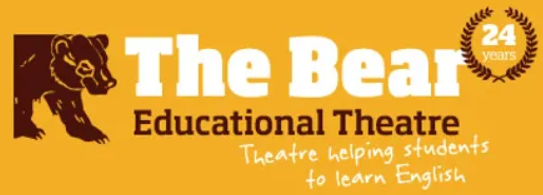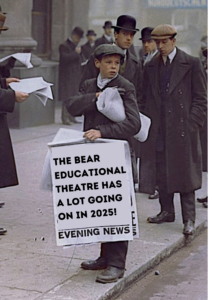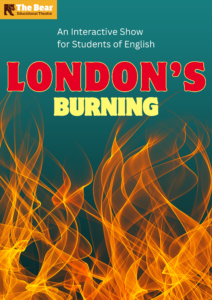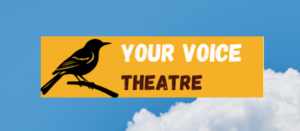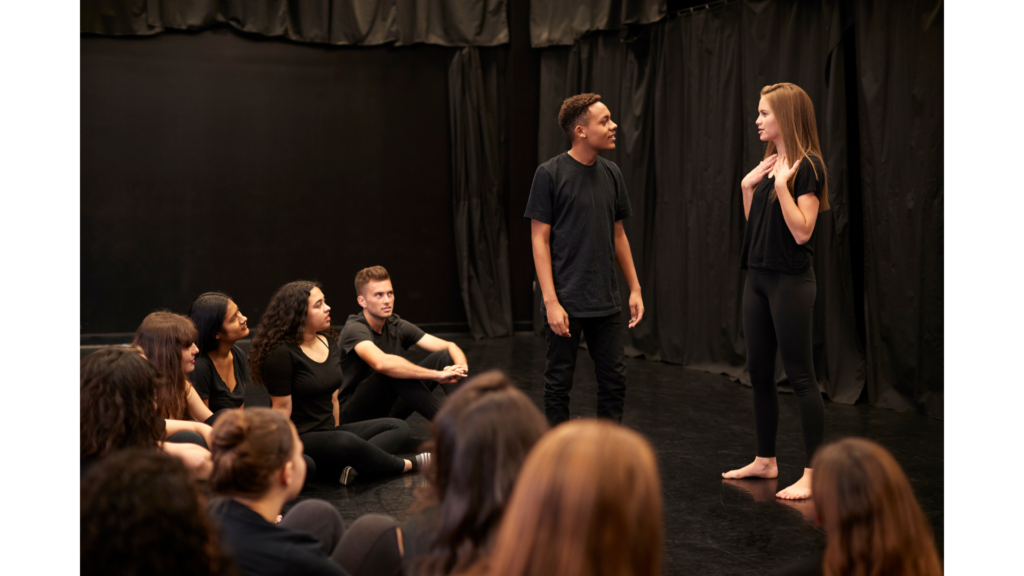
Once at a teacher-training event, I asked the participants if they knew how to put up a show with their students. It was a small group of very experienced teachers and they all admitted that they were not sure how they would go about it.
I enjoy staging scenes and making shows with student groups very much. I love the process of helping students to find their voices and put together a show that they are proud of. I also love the creative process of putting together a show that gives everybody in the group something satisfying to do. This article is about just that, how I go about staging scenes and making shows with students.
The process will always be slightly different depending on the size, age, and level of the group, time constraints etc, but here is a rough breakdown of some stages that I go through when I create a show with students.
We will look at 5 stages
- Warming-up, playing games.
- Choosing a story
- Going scene by scene
- Writing a script
- Rehearsing
Stage 1 – Games and Short Scenes
If there is time I will start by playing some drama games together and inviting the students to put together some short scenes or roleplays. This helps to bring the group together and it shows them that the process of putting up a show is going to be fun, or, on the contrary, it gives them a chance to realise that they are not going to enjoy it and should get out now. It also gives me a chance to get to know the group and some of the individual personalities within it. This can be a useful thing to do, even if you think you know your students well, because drama work can bring hidden sides of people that are not displayed during the usual school routine.
Stage 2 – Agree on a story.
It may be that you already have a story that you want to tell, or even a script that you want to work with. That is fine, in fact if you have a script, you can skip stages 3 and 4 here. But the show will work best if there is a clear story that you want to tell as a group. The challenge then becomes – can you as a group share that story with an audience? Can you get the audience to understand the story? Can you get them to enjoy it?
There are two things to notice here. 1 – the group needs to know what their mission is, what the story is that they are going to tell. 2 – It is not about the actors. They should not think about themselves, but rather about the story and the obligation they have to share that story with an audience.
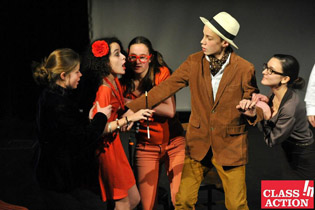
Stage 3 – Make a Scene By Scene Breakdown.
I always do this before producing a script. Even if you already have a script it is a useful exercise to go scene by scene and ask yourself these questions – who is in this scene? What is the story? What is different at the end of the scene compared with the start of the scene? What does the audience need to understand before they are ready to move on to the next scene? Doing this is a way to make sure that despite all of the personalities and funny ideas and whatever else people want to put in the show, despite all of that, the story will get told.
Stage 4 – Write the script.
It is important to incorporate students‘ ideas as much as possible. However, I tend to write the final version of the script myself because I have experience and can quickly write a script that will work on stage. It is possible though to make it into an exercise and have students writing parts of the script, or improvise the scenes and use that as the basis of the script. Still, I would always put one person in charge of making the final decisions and producing the final script. It should not be too wordy (people talking a lot and nothing happening), it is better if it contains some action and whatever happens, the story must be told well and efficiently.
Stage 5 – Rehearsal.
The most important thing to practice is the delivery of the text. It should be loud and clear and ideally not too fast. The audience should be able to understand what the actors are saying without working too hard. Otherwise keep the staging simple, do not have things happening on stage that take attention away from the people who are talking. And have fun with costumes and simple scenery and generally have fun. Sharing the story with the audience is the main priority, but looking like you obviously enjoy it and want to be there is a big part of it too. Putting on a show should be fun for everyone involved, the people watching it and the people doing it.
Final Word
Putting on a show with students is a great learning experience for all concerned and something that you will never forget. I hope you will seriously consider giving it a go. You can always ask us for help and advice!
